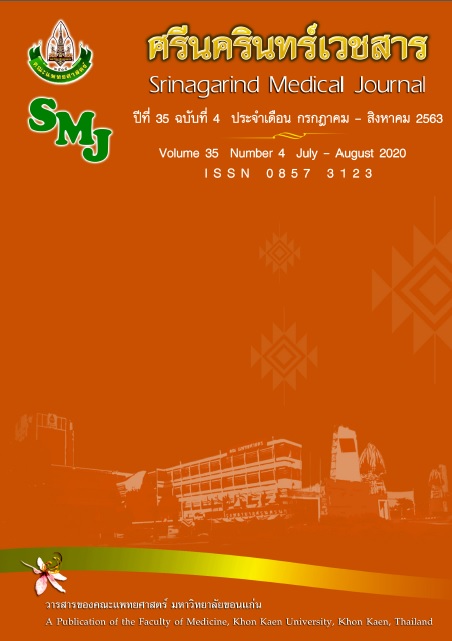Effects of a 2-week Home-Based Strength Training Associated with Task-Oriented Training to Upper Limb Function Activities in Patients with Chronic Stroke
Keywords:
Stroke; Task-Oriented Training; Upper Limb Functional Activities; Muscle Strength; Muscle ToneAbstract
Background and objective: Muscle weakness is the main cause of upper limb function activities (ULFA) dysfunction, which is commonly found in stroke patients. Task-oriented training (TOT) and strengthening programs may improve ULFA. The purpose of this study was to investigate the effects of adding strength training to TOT in chronic stroke.
Methods: A double blind, randomized controlled trial was conducted. Twenty chronic stroke patients were allocated to either home-based personalized strength training added to TOT (ST_TOT group, n=10) or TOT (TOT group, n=10). The participants in both groups received individualized training for 70 minutes, 5 times/week for a period of 2 weeks. Upper limb function, hand grip strength, and muscle tone were assessed by The Streamlined Wolf Motor Function test (chronic) (SWMFT-C), Hand grip dynamometer and Modified Ashworth Scale, respectively.
Results: At the end of the 2-week training phase, the ST_TOT group showed statistically significant improvement in both SWMFT-C and hand grip strength (p<0.05), without any increase of muscle tone. No statistically significant differences were seen in the TOT group. However, when compared with between group were not statistically significant.
Conclusion: Adding strength training to task-oriented training in patients with chronic stroke had statistically significant beneficial effects on ULFA and hand grip strength in 2 weeks
References
2. Kilbreath SL, Heard RC. Frequency of hand use in healthy older persons. Aust J Physiother 2005; 51: 119-22.
3. Beebe JA, Lang CE. Active range of motion predicts upper extremity function 3 months after stroke. Stroke 2009; 40: 1772-9.
4. Sun Y, Ledwell NMH, Boyd LA, Zehr EP. Unilateral wrist extension training after stroke improves strength and neural plasticity in both arms. Exp Brain Res 2018; 236: 2009-21.
5. Harris JE, Eng JJ. Strength training improves upper-limb function in individuals with stroke: a meta-analysis. Stroke 2010; 41: 136-40.
6. da Silva PB, Antunes FN, Graef P, Cechetti F, Pagnussat Ade S. Strength training associated with task-oriented training to enhance upper-limb motor function in elderly patients with mild impairment after stroke: a randomized controlled trial. Am J Phys Med Rehabil 2015; 94: 11-9.
7. Patten C, Dozono J, Schmidt S, Jue M, Lum P. Combined functional task practice and dynamic high intensity resistance training promotes recovery of upper-extremity motor function in post-stroke hemiparesis: a case study. J Neurol Phys Ther 2006; 30: 99-115.
8. Park J. Effects of task-oriented training on upper extremity function and performance of daily activities in chronic stroke patients with impaired cognition. J Phys Ther Sci 2016; 28: 316-8.
9. Thant AA, Wanpen S, Nualnetr N, Puntumetakul R, Chatchawan U, Hla KM, et al. Effects of task-oriented training on upper extremity functional performance in patients with sub-acute stroke: a randomized controlled trial. J Phys Ther Sci 2019; 31: 82-7.
10. Bosch J, O’Donnell M, Barreca S, Thabane L, Wishart L. Does Task-Oriented Practice Improve Upper Extremity Motor Recovery after Stroke? A Systematic Review. ISRN Stroke 2014 Article ID 504910: 1-10.
11. Rosenbaum DA, Carlson RA, Gilmore RO. Acquisition of intellectual and perceptual-motor skills. Annu Rev Psychol 2001; 52: 453-70.
12. Arya KN, Verma R, Garg RK, Sharma VP, Agarwal M, Aggarwal GG. Meaningful task-specific training (MTST) for stroke rehabilitation: a randomized controlled trial. Top Stroke Rehabil 2012; 19: 193-211.
13. Verheyden G, Nieuwboer A, Mertin J, Preger R, Kiekens C, De Weerdt W. The Trunk Impairment Scale: a new tool to measure motor impairment of the trunk after stroke. Clin Rehabil 2004; 18: 326-34.
14. Stark T, Walker B, Phillips JK, Fejer R, Beck R. Hand-held dynamometry correlation with the gold standard isokinetic dynamometry: a systematic review. PMR 2011; 3: 472-9.
15. Ansari NN, Naghdi S, Mashayekhi M, Hasson S, Fakhari Z, Jalaie S. Intra-rater reliability of the Modified Modified Ashworth Scale (MMAS) in the assessment of upper-limb muscle spasticity. NeuroRehabilitation 2012; 31: 215-22.
16. Almhdawi KA, Mathiowetz VG, White M, delMas RC. Efficacy of Occupational Therapy Task-oriented Approach in Upper Extremity Post-stroke Rehabilitation. Occup Ther Int 2016; 23: 444-56.
17. Cornwell AS, Liao JY, Bryden AM, Kirsch RF. Standard task set for evaluating rehabilitation interventions for individuals with arm paralysis. J Rehabil Res Dev 2012; 49: 395-403.
18. Harris JE, Eng JJ. Paretic upper-limb strength best explains arm activity in people with stroke. Phys Ther 2007; 87: 88-97.
19. Kim D. The effects of hand strength on upper extremity function and activities of daily living in stroke patients with a focus on right hemiplegia. J Phys Ther Sci 2016; 28: 2565-7.
20. Lin CH, Knowlton BJ, Chiang MC, Iacoboni M, Udompholkul P, Wu AD. Brain-behavior correlates of optimizing learning through interleaved practice. Neuroimage Clin 2011; 56: 1758-72.
21. Kreisel SH, Hennerici MG, Bazner H. Pathophysiology of stroke rehabilitation: the natural course of clinical recovery, use-dependent plasticity and rehabilitative outcome. J Stroke Cerebrovasc Dis 2007; 23: 243-55.
22. Mercier C, Bourbonnais D. Relative shoulder flexor and handgrip strength is related to upper limb function after stroke. Clin Rehabil 2004; 18: 215-21.




